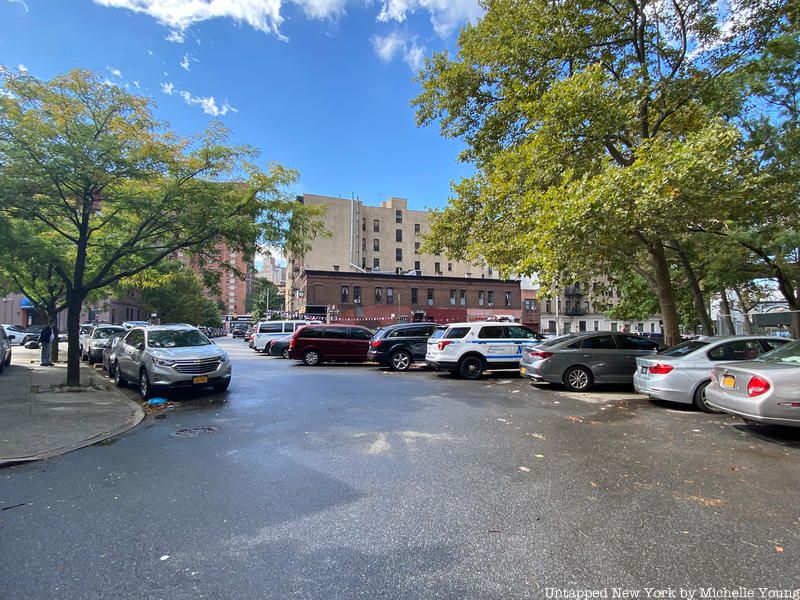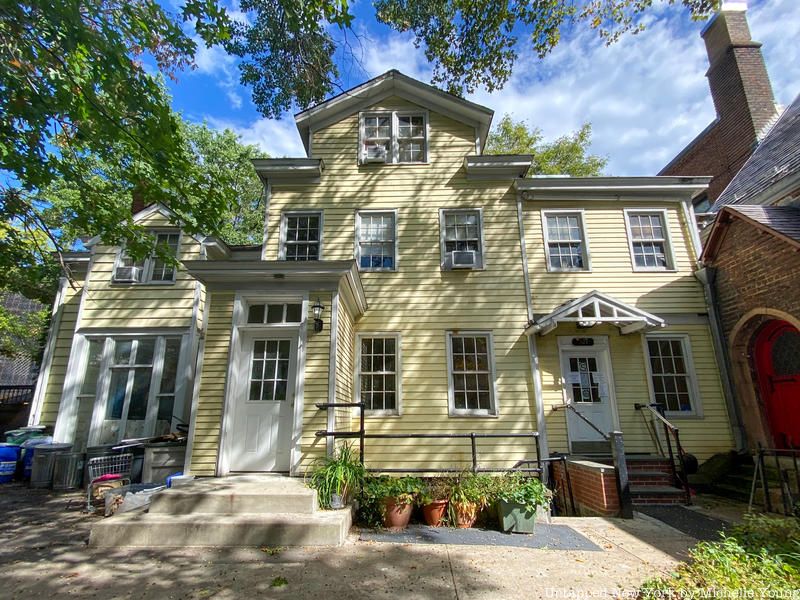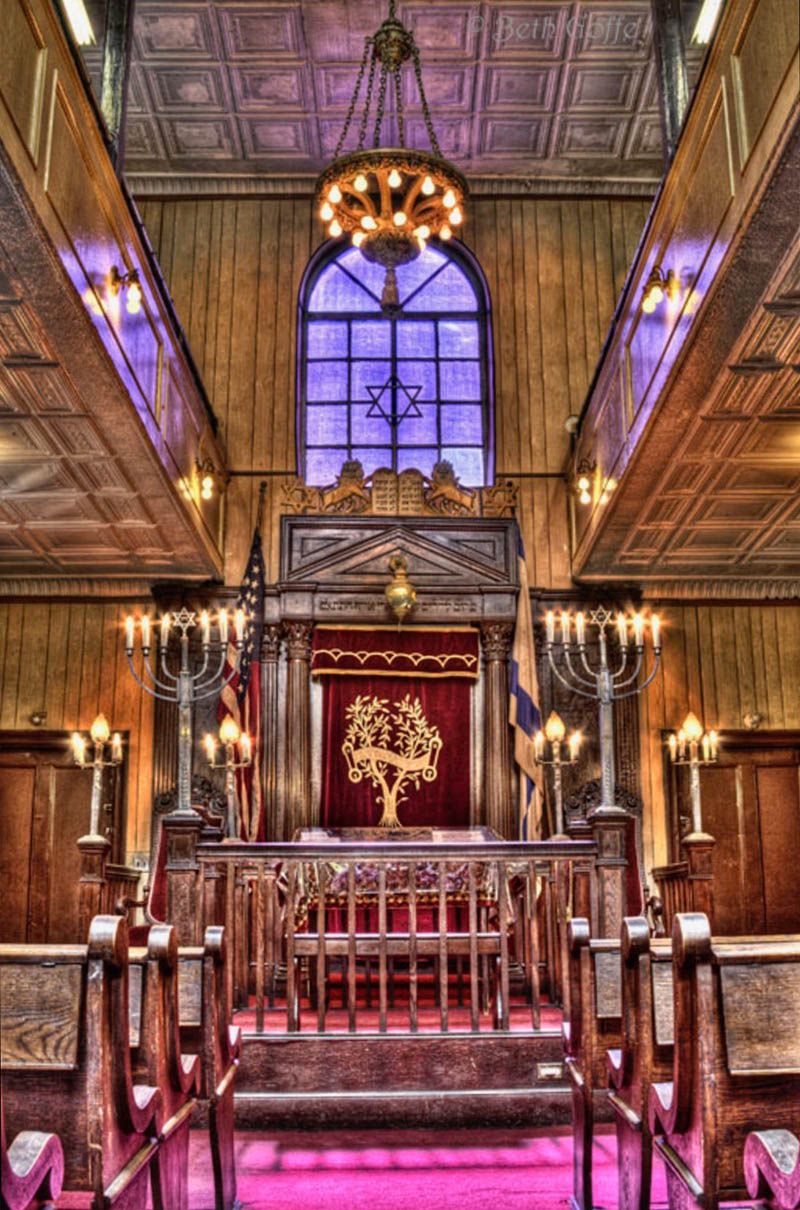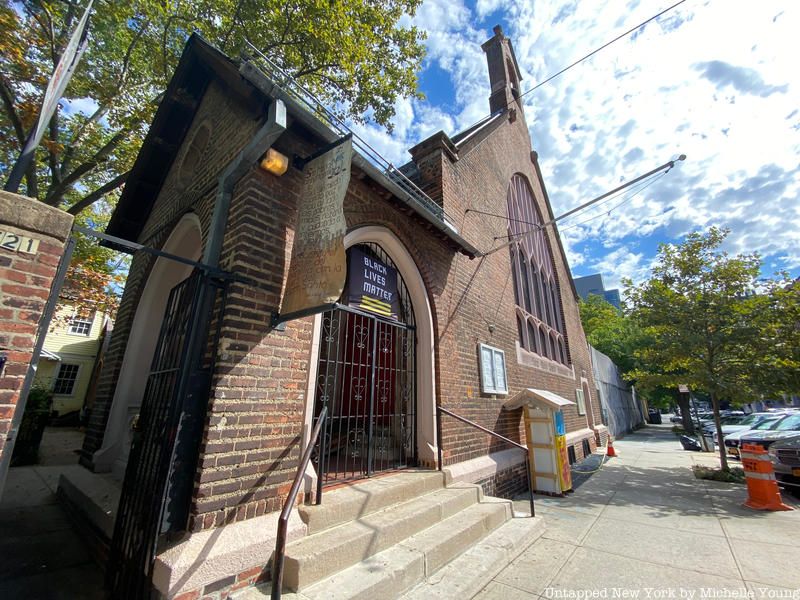Last Chance to Catch NYC's Holiday Notalgia Train
We met the voices of the NYC subway on our nostalgia ride this weekend!


You’ve heard of Broadway, of course, but what about “Old Broadway”? This little alley off 125th Street in Manhattanville is just 400 feet long, less than 200 feet from Broadway. But wait, there’s another “Old Broadway” that extends south from 133rd Street to 131st Street! Both are remnants of the original Bloomingdale Road, which became Broadway in most of Manhattan. This forgotten vestige of a street tells the story of New York City’s urban development over the course of centuries.

Old Broadway curves at 129th Street
In 1807, the Commissioners’ Plan laid out the future street plan of New York City. After Union Park (now Union Square), Broadway became the Bloomingdale Trail (or Bloomingdale Road), which ascended the length of Manhattan. During the Dutch era of New York, the portion of Manhattan between 100th and 130th Street was known as Bleomendael, or Bloemendaal, later anglicized to Bloomingdale.
This area of Manhattan was dotted with farms, settled by “poor British- and Dutch-Americans and a few blacks,” according to the NYC Landmarks Preservation designation report for the nearby St. Mary’s Episcopal Church. Further north became the domain of wealthy New Yorkers like C.K.G. Billings and the Drake family, who built lavish estates . As the New York Times described in 1912, along this stretch of the old Bloomingdale Road, there were “brick houses with mansard roofs…erected from when Harlem was principally inhabited by goats and Manhattanville was a tiny settlement of farm houses, surrounded by open fields and truck gardens.”

Rectory of St. Mary’s Episcopal Church, just off Old Broadway
In the late 1860s, the Bloomingdale Road uptown was widened and straightened. It was one of the many urban changes enacted by Andrew Haswell Green, New York’s first master planner (way before Robert Moses) after he took over as the city’s comptroller after the fall of the Tweed Ring. As Fran Leadon writes in Broadway: A History of New York City in Thirteen Miles, the city did not have any legal obligation to follow the old Bloomingdale Road north of 86th Street: “they could open the new avenue anywhere they pleased and so they decided to plow straight north and abandoned the Bloomingdale Road which gradually fell into disuse.”
Between 125th and 133rd streets, the new Broadway took the most direct path and was called The Boulevard, while the curved portions of the old Bloomingdale Road were cut off. It would be rechristened “Old Broadway” in 1899 by the Board of Aldermen. According to The New Yorker, the new Broadway up here was quite the place to be. In the 1870s, “it was a favorite place for young bloods to drive their carriages. Later on in the [1890s], the what-next set rode their high wheeled bicycles on the Boulevard.” Crazy times.
Until the late 1950s, Old Broadway extended uphill for eight blocks. A 1912 New York Times article addressed the reasons why Old Broadway was allowed to remain, musing “Why the few blocks of Old Broadway were left no one knows exactly, but probably because the wiping out of the thoroughfare, with many of its old houses, would have entailed unnecessary hardship upon the residents.”
Starting in 1957, the large swath of land between Broadway and Amsterdam avenues from 126th to 133rd streets was cleared out as part of the city’s large-scale urban renewal efforts. Old Broadway was bisected in two, around which the Manhattanville Houses were built. The housing complex is run to this day by NYCHA, its towers in the park standing unchallenged for decades until the construction of Columbia University’s Manhattanville campus brought in taller, more modern towers to the area.

Inside the Old Broadway Synagogue. Photo by Beth Goffe, Untapped New York tour guide who leads our Jacob Wrey Mould tour of Central Park and the Hidden Gems of Central Park.
The southern section of Old Broadway starts at 125th Street, and curves east after two blocks, turning into West 129th Street. It passes by the Old Broadway Synagogue at 15 Old Broadway. The congregation is still active, and is the last of the many Jewish synagogues that used to be all over Harlem. The brick and stone building with stained glass windows is on both the National and State Register for Historic Places and was built on the site of an old house in 1928. Then, at the intersection of West 126th Street is the NYC Health + Hospitals Old Broadway location.

St. Mary’s Episcopal Church
There is no 127th Street or 128th Street here, so in between is the Sheltering Arms Playground and Pool, along with the landmarked St. Mary’s Episcopal Church, with its wooden clapboard rectory. St. Mary’s Episcopal has been at this site since 1823, a witness to all of the changes to Bloomingdale Road. A pond behind the church was filled in to combat a cholera epidemic in 1834. According to the NYC Landmarks Preservation Commission’s designation report, “Despite the urbanization of the surrounding area, St. Mary’s complex of church, Sunday school, and white frame parish house surrounding a garden evokes the early days of the village of Manhattanville.”
Old Broadway picks up again at 131st Street, which juts in for about 300 feet, until Old Broadway begins and heads north for two blocks to 133rd Street. To the west are the back of the buildings along Broadway, to the east are the Manhattanville Houses.
Old Broadway today is a remnant of a remnant, located just steps from the Broadway that everyone knows. As the new developments connected with Columbia University’s Manhattanville campus go up, its persistence over the centuries helps us retain a picture of what this area of Manhattan may have once looked like.
To learn more about the Dutch and colonial era of New York, join us for a virtual talk on the Remnants of Dutch New Amsterdam:
On a visit to Old Broadway, take a look at the nearby Prentiss Hall, a former nuclear testing facility that still stands.
Subscribe to our newsletter